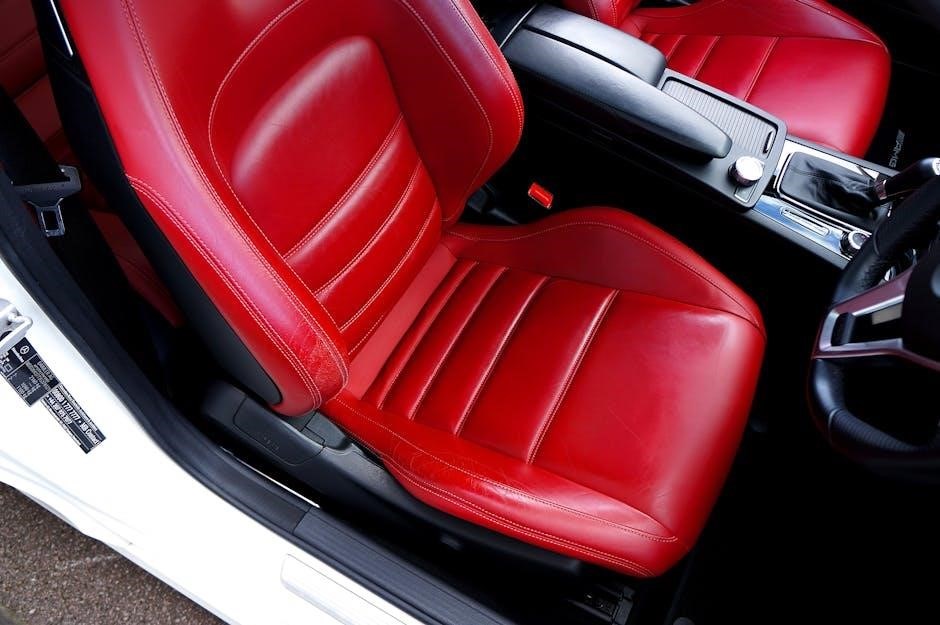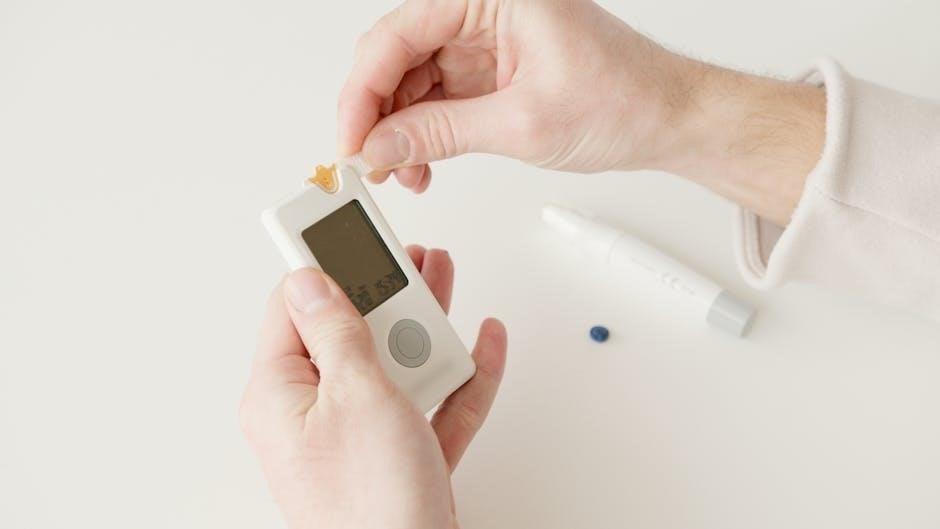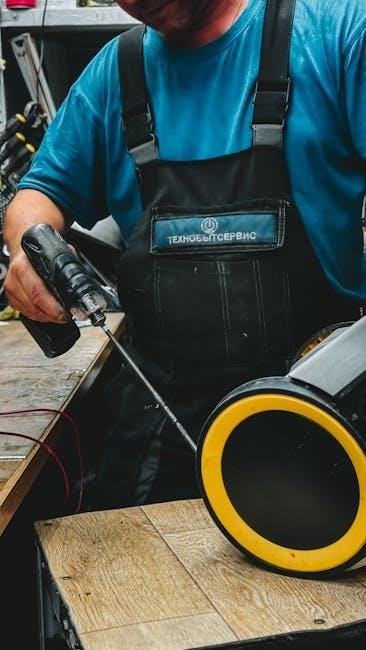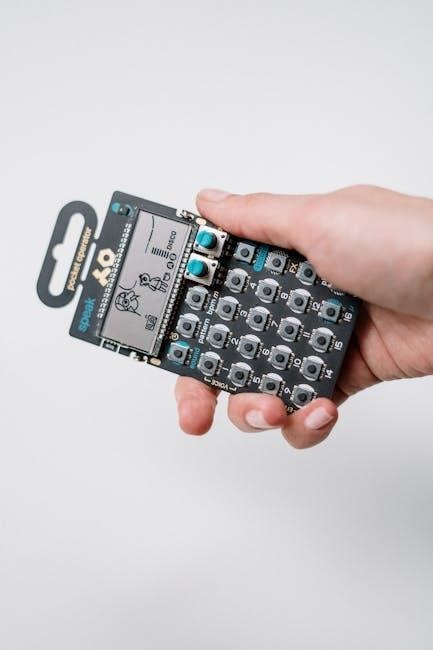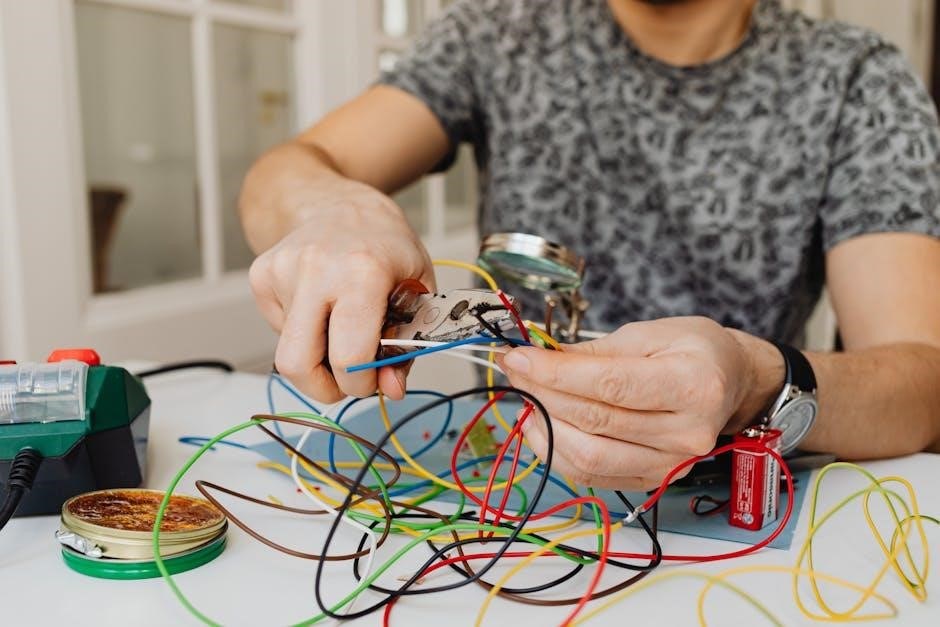The Kappa Alpha Psi Scroller Manual is a vital resource for members, providing comprehensive guidance on fraternity operations, traditions, and the scroller process. It serves as a foundation for understanding the fraternity’s legacy, leadership development, and community service, ensuring members uphold the organization’s values and principles effectively.
1.1 Purpose of the Manual
The Kappa Alpha Psi Scroller Manual serves as a detailed guide for members, outlining the fraternity’s traditions, rituals, and operational standards. Its primary purpose is to ensure members understand their roles and responsibilities within the organization.
By providing clear instructions and historical context, the manual helps maintain the fraternity’s legacy, fostering leadership development and community engagement while ensuring smooth chapter operations and adherence to core values.
1.2 Structure and Organization
The Kappa Alpha Psi Scroller Manual is organized into logical sections, each addressing specific aspects of fraternity life. It includes chapters on history, leadership, community service, and rituals, ensuring a comprehensive understanding of the fraternity’s structure. Appendices provide additional resources, making it easy to navigate and reference key information while maintaining the organization’s traditions and operational efficiency.
1.3 Key Sections of the Manual
The Kappa Alpha Psi Scroller Manual includes essential sections such as the scroller process, leadership development, and community service guidelines. It also covers rituals and ceremonies, financial management, and conflict resolution techniques. These key sections ensure members are well-informed and equipped to uphold the fraternity’s mission, fostering a culture of excellence and brotherhood while maintaining operational efficiency and integrity.

Historical Background of Kappa Alpha Psi
Kappa Alpha Psi was founded in 1911 at Indiana University, emerging as a historically Black Greek letter fraternity. The Scroller Manual preserves its legacy, outlining its evolution and the role of scrollers in shaping its traditions and values, ensuring the fraternity’s commitment to service, leadership, and cultural excellence endures.
2.1 Founding and Evolution of the Fraternity
Kappa Alpha Psi was founded on January 5, 1911, at Indiana University by ten visionary students. The fraternity’s name, derived from Greek, signifies “Christ is Risen from the Dead.” Its establishment aimed to unite college men of culture, patriotism, and honor. Over the years, the fraternity has evolved into a global organization, emphasizing leadership, service, and brotherhood. The Scroller Manual preserves this legacy, guiding members through its rich history and traditions.
2.2 The Role of the Scroller in Fraternity History
The Scroller has played a pivotal role in the history of Kappa Alpha Psi, serving as a preparatory platform for prospective members. Established to provide intellectual and cultural enrichment, the Scroller Club historically groomed aspirants for initiation, fostering brotherhood and adherence to the fraternity’s core values. Its legacy is intertwined with the fraternity’s growth, ensuring the preservation of traditions and the development of principled leaders.
Understanding the Scroller Process
The Scroller process involves preparing prospective members for initiation through structured activities and education. It outlines the steps to become a Scroller, emphasizing the significance of this transformative journey within the fraternity’s framework, ensuring alignment with Kappa Alpha Psi’s values and traditions. This process is crucial for fostering brotherhood and leadership development.
3.1 Definition and Significance of a Scroller
A Scroller is a prospective member of Kappa Alpha Psi engaged in the preliminary stage of joining the fraternity. The term signifies their role in preparing for initiation through education and active participation. The Scroller process is vital as it builds foundational knowledge, fosters brotherhood, and ensures alignment with the fraternity’s mission and values, preparing individuals for lifelong commitment and leadership within the organization.
3.2 Steps Involved in Becoming a Scroller
Becoming a Scroller involves several structured steps, starting with the expression of interest and meeting eligibility criteria. Prospective members must attend informational sessions, complete educational modules, and demonstrate a commitment to the fraternity’s values. The process includes interviews with current members and participation in preliminary activities, all designed to prepare individuals for initiation and active membership within Kappa Alpha Psi.
Leadership Development Through the Scroller Manual
The manual fosters leadership growth by outlining core principles and practical guidance, empowering members to excel in service and brotherhood while upholding the fraternity’s legacy.
4.1 Leadership Principles Outlined in the Manual
The Kappa Alpha Psi Scroller Manual outlines essential leadership principles such as integrity, accountability, and vision. It emphasizes the importance of ethical decision-making and servant leadership, providing members with a framework to inspire and guide their chapters effectively. These principles are designed to cultivate a culture of excellence and responsibility within the fraternity.
4.2 Mentorship and Guidance Programs
The Kappa Alpha Psi Scroller Manual emphasizes the importance of mentorship and guidance programs to foster personal and professional growth. It outlines structured initiatives where experienced members guide new recruits, promoting leadership development and brotherhood. These programs ensure a supportive environment for members to thrive, aligning with the fraternity’s mission of cultivating principled leaders and strengthening community impact through shared knowledge and experience.
Community Service and Engagement
The Kappa Alpha Psi Scroller Manual highlights the fraternity’s commitment to community service, providing guidelines for engaging in meaningful activities that foster positive social impact and brotherhood.
5.1 The Fraternity’s Commitment to Service
Kappa Alpha Psi is deeply dedicated to community service, emphasizing the importance of giving back through initiatives like mentorship, education, and health awareness. The Scroller Manual outlines the fraternity’s commitment to addressing societal issues, fostering a culture of service, and empowering members to be active contributors to their communities. This commitment is central to the fraternity’s mission and values.
5.2 How the Manual Encourages Community Involvement
The Kappa Alpha Psi Scroller Manual emphasizes the importance of community engagement by providing guidelines for service initiatives, such as health awareness programs and educational workshops. It encourages members to participate in local outreach activities, fostering a culture of giving back. The manual also outlines strategies for collaborating with other organizations to amplify impact, ensuring members are actively involved in addressing community needs and promoting positive change.

Rituals and Ceremonies in Kappa Alpha Psi
The Kappa Alpha Psi Scroller Manual outlines the sacred rituals and ceremonies integral to the fraternity, ensuring traditions are preserved and executed with dignity and precision.
6.1 Initiation Rituals and Their Importance
The initiation rituals of Kappa Alpha Psi are a cornerstone of the fraternity, symbolizing the transition from candidacy to full membership. These sacred ceremonies, detailed in the Scroller Manual, ensure the preservation of the fraternity’s legacy and values. Rituals are conducted with precision, emphasizing unity, brotherhood, and the commitment to the organization’s principles. They serve as a rite of passage, fostering a deep sense of identity and shared purpose among members.
6.2 Ceremonial Practices and Traditions
The ceremonial practices of Kappa Alpha Psi are deeply rooted in tradition, serving as a cornerstone of fraternity identity. These rituals, outlined in the Scroller Manual, include symbolic gestures and prescribed protocols that foster unity and continuity. By upholding these customs, members honor the fraternity’s legacy while reinforcing shared values. Such traditions ensure the organization’s heritage endures, inspiring commitment to its mission and fostering a sense of belonging among brothers.

The Scroller Club Manual
The Scroller Club Manual is a comprehensive guide for establishing and managing Scroller Clubs within Kappa Alpha Psi. It outlines the club’s mission, operational procedures, and strategies for fostering meaningful relationships and intellectual growth among members, ensuring alignment with the fraternity’s core values and objectives.
7.1 Purpose and Objectives of the Scroller Club
The primary purpose of the Scroller Club is to provide intellectual stimulation and foster brotherhood among prospective members. It serves as a platform for networking, leadership development, and community engagement, aligning with Kappa Alpha Psi’s mission to develop well-rounded leaders. By promoting academic excellence and cultural awareness, the club ensures a strong foundation for future fraternity members.
7.2 Guidelines for Establishing a Scroller Club
To establish a Scroller Club, define its purpose, structure, and membership criteria. Appoint a qualified advisor to oversee operations and ensure alignment with Kappa Alpha Psi’s mission. Schedule regular meetings, focusing on intellectual growth, leadership development, and community service. Adhere to the fraternity’s bylaws and maintain open communication with the chapter. This ensures the club’s success and contributes meaningfully to the fraternity’s legacy.
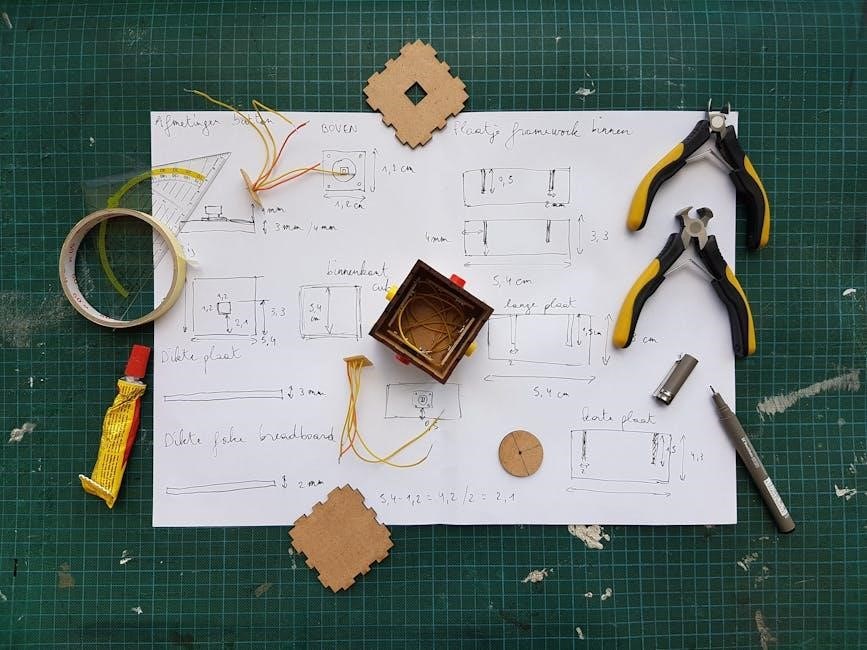
Membership Requirements and Benefits
Membership in Kappa Alpha Psi requires meeting specific criteria, including academic standards and community involvement. Benefits include leadership development, mentorship, and lifelong brotherhood, fostering personal and professional growth.
8.1 Eligibility Criteria for Membership
Membership in Kappa Alpha Psi requires candidates to meet specific academic, ethical, and community service standards. Prospective members must typically maintain a minimum GPA, demonstrate leadership potential, and exhibit strong moral character. Additionally, candidates must complete a formal application process and undergo evaluation by current members. The Scroller Manual outlines these criteria in detail to ensure alignment with the fraternity’s values and legacy.
8.2 Benefits of Being a Scroller
Becoming a Scroller offers numerous benefits, including leadership development, mentorship opportunities, and access to a global network of like-minded individuals. Members gain exclusive resources, participate in community service initiatives, and enhance their personal and professional growth. The fraternity’s emphasis on brotherhood, scholarship, and service provides a transformative experience, fostering lifelong connections and a strong sense of purpose.

The Role of the Polemarch and Strategus
The Polemarch leads chapter meetings, ensuring order and productivity, while the Strategus manages security and operational logistics, jointly fostering a structured and efficient fraternity environment.
9.1 Responsibilities of the Polemarch
The Polemarch is the chief executive officer of the chapter, overseeing all operations and ensuring adherence to fraternity bylaws. They preside over meetings, enforce rules, and maintain order. The Polemarch also represents the chapter in external affairs, promoting its interests and fostering unity among members. Their leadership is crucial for the chapter’s effectiveness and growth.
9.2 Duties of the Strategus
The Strategus ensures the chapter’s adherence to national bylaws and local policies. They review and audit records, manage correspondence, and maintain accurate documentation. The Strategus also advises the Polemarch and other officers, providing strategic guidance to achieve chapter goals. Their role is essential for maintaining compliance, transparency, and operational efficiency within the fraternity;
Event Management and Coordination
The Kappa Alpha Psi Scroller Manual offers detailed strategies for organizing successful events, emphasizing effective communication, planning, and execution to ensure seamless coordination and impactful outcomes;
10.1 Best Practices for Organizing Events
Organizing successful events requires meticulous planning, clear communication, and adherence to the Kappa Alpha Psi Scroller Manual. Key steps include defining objectives, creating detailed timelines, assigning roles, and promoting effectively. Ensure venues are secured early, budgets are managed, and safety protocols are in place. Post-event follow-ups and evaluations are crucial for continuous improvement and member feedback, fostering a culture of excellence and accountability within the fraternity.
10.2 Ensuring Smooth Execution of Activities
Effective execution of activities requires strong leadership, clear communication, and thorough preparation. Adhere to the Kappa Alpha Psi Scroller Manual guidelines, utilize checklists, and assign roles to ensure accountability. Conduct regular rehearsals, prepare for contingencies, and maintain open lines of communication to address challenges promptly. This approach ensures events align with the fraternity’s mission and values, fostering a seamless and impactful experience for all participants.

Communication and Collaboration Tools
Effective communication and collaboration are essential for the success of Kappa Alpha Psi. Utilize digital platforms, email, and project management tools to enhance productivity and alignment with the fraternity’s mission.
11.1 Internal Communication Strategies
Internal communication within Kappa Alpha Psi is crucial for ensuring alignment and cohesion. The Kappa Alpha Psi Scroller Manual emphasizes the use of email, project management software, and regular chapter meetings to maintain clear and consistent communication. These strategies foster collaboration, transparency, and accountability, enabling members to stay informed and engaged in fraternity activities while upholding the organization’s mission and values effectively.
11.2 Collaborative Efforts Within the Fraternity
Collaborative efforts within Kappa Alpha Psi are essential for fostering unity and achieving shared goals. The Scroller Manual encourages teamwork through mentorship programs, joint committee initiatives, and community service projects. By promoting active participation and shared responsibility, members strengthen bonds and contribute to the fraternity’s mission. This collective approach ensures that all chapters align with the organization’s vision and values, driving success and brotherhood.

Financial Management and Budgeting
Effective financial management is crucial for the fraternity’s sustainability. The manual outlines strategies for budget creation, expense tracking, and fundraising to ensure fiscal integrity and accountability, guiding members in responsible resource allocation.
12.1 Budgeting for Scroller Activities
Budgeting is essential for managing scroller activities effectively. The manual provides clear guidelines for allocating funds, tracking expenses, and ensuring financial sustainability. It emphasizes creating detailed budgets, prioritizing spending, and maintaining transparency in financial decisions. By adhering to these principles, chapters can efficiently organize events, support community initiatives, and maintain fiscal responsibility, ensuring the fraternity’s continued growth and impact.
12.2 Fundraising Strategies
The manual outlines effective fundraising strategies to support scroller activities and community engagement. It encourages organizing events, seeking sponsorships, and leveraging digital platforms for donations. Emphasizing transparency and accountability, the guide provides methods to ensure funds are allocated efficiently. These strategies help chapters achieve financial stability while fostering strong community relationships and advancing the fraternity’s mission.
Conflict Resolution and Dispute Management
The manual provides structured procedures for addressing conflicts, promoting mediation, and fostering harmony within chapters. It ensures disputes are resolved amicably, maintaining fraternity unity and integrity.
13.1 Addressing Conflicts Within the Chapter
The manual outlines clear steps for resolving chapter conflicts, emphasizing open communication and mutual respect. It provides guidelines for identifying issues, mediating discussions, and implementing solutions to maintain unity and focus on shared goals. By fostering a constructive approach, the manual ensures that conflicts strengthen rather than divide the brotherhood, aligning with the fraternity’s values of unity and progress. Effective conflict resolution is crucial for sustaining a positive and productive chapter environment, where all members feel valued and heard. The manual reinforces the importance of addressing disputes promptly and fairly, promoting a culture of understanding and collaboration. This approach not only resolves current issues but also prevents future misunderstandings, ensuring the chapter’s continued success and harmony. Through structured conflict resolution, the fraternity upholds its commitment to brotherhood and collective growth. The manual serves as a vital tool in nurturing a supportive and inclusive chapter atmosphere. By adhering to these guidelines, members can navigate challenges with confidence, fostering a stronger and more resilient fraternity. The manual’s conflict resolution strategies are designed to empower chapters to handle disagreements with integrity and fairness, preserving the fraternity’s legacy of unity and excellence. The detailed procedures ensure that every voice is heard and every concern is addressed, creating a foundation of trust and respect among all members. This structured approach to conflict management is essential for maintaining the fraternity’s core values and ensuring long-term success. By prioritizing open dialogue and constructive resolution, the manual helps chapters overcome obstacles and focus on their shared mission of service, leadership, and brotherhood. The guidelines provided are tailored to promote understanding and cooperation, enabling chapters to thrive even in the face of challenges. The manual’s emphasis on proactive conflict resolution reflects the fraternity’s dedication to fostering a harmonious and productive environment for all its members. Through these strategies, the fraternity continues to build a legacy of unity, strength, and collective achievement, ensuring that every chapter remains a place of growth and camaraderie.
13.2 Mediation and Resolution Techniques
The manual details mediation techniques to resolve conflicts fairly and efficiently. It emphasizes the role of neutral third parties to facilitate open dialogue, ensuring all perspectives are heard. By fostering active listening and compromise, the manual promotes harmony within the chapter. Techniques include structured discussions, problem-solving workshops, and accountability measures to ensure resolutions align with the fraternity’s values. The goal is to strengthen brotherhood while addressing disputes constructively.

Technology and Digital Tools
The Kappa Alpha Psi Scroller Manual emphasizes the importance of leveraging digital tools for efficient communication and resource management within the fraternity to enhance collaboration and ensure accessibility for all members.
14.1 Utilizing Digital Platforms for Communication
The Kappa Alpha Psi Scroller Manual highlights the importance of digital platforms for seamless communication. Tools like Slack, Zoom, and Google Workspace enable real-time collaboration, fostering transparency and efficiency. These platforms allow members to share resources, coordinate events, and maintain connectivity, ensuring all chapters stay aligned with the fraternity’s mission and values. Effective digital communication strengthens brotherhood and supports the fraternity’s operational excellence.
14.2 Managing Digital Resources Effectively
Effective management of digital resources is crucial for maintaining organizational efficiency. The Kappa Alpha Psi Scroller Manual emphasizes organizing files on platforms like Google Drive, ensuring secure access, and regular backups. Members are encouraged to use tools like Trello for task management and implement strong password policies. Regular audits and training ensure resources are utilized responsibly, safeguarding sensitive information and promoting operational excellence within the fraternity.

Accessing and Utilizing the Scroller Manual PDF
The Kappa Alpha Psi Scroller Manual PDF is available on platforms like DocHub, offering easy access for members to download, edit, and share the document efficiently.
15.1 Sources for Downloading the Manual
The Kappa Alpha Psi Scroller Manual PDF can be downloaded from the official fraternity website or trusted platforms like DocHub. Members often access it through internal fraternity links or shared digital repositories. Ensure authenticity by downloading from verified sources to maintain confidentiality and integrity of the document. Always follow fraternity guidelines for distribution and usage of the manual.
15.2 Tips for Effective Utilization
To maximize the value of the Kappa Alpha Psi Scroller Manual PDF, review it regularly to stay updated on protocols and traditions. Highlight key sections for quick reference and apply the outlined principles in chapter activities. Utilize digital tools for easy navigation and share insights with fellow members to foster collective understanding and alignment with fraternity goals. Regularly update your knowledge to ensure compliance with the latest guidelines.
The Kappa Alpha Psi Scroller Manual PDF is an indispensable tool for guiding members through fraternity traditions, leadership development, and community engagement. By adhering to its principles, members can uphold the organization’s legacy while fostering personal and collective growth. This manual empowers individuals to embrace the fraternity’s mission, ensuring a strong foundation for future generations. Its insights and guidelines remain vital for maintaining excellence and brotherhood within Kappa Alpha Psi.





